Melissa Dunson and Chris Morris : Unlocking Roofing & Siding Potential - PODCAST TRANSCRIPT
May 7, 2025 at 11:00 a.m.Editor's note: The following is the transcript of a live interview with Central States’ Senior Marketing Manager, Melissa Dunson, and Stonegate CEO and Sherwin Williams’ MetalVue Partner, Chris Morris. You can read the interview below or listen to the podcast.
Intro: Welcome to Roofing Road Trips, the podcast that takes you on a thrilling journey across the world of roofing. From fascinating interviews with roofing experts to on-the-road adventures, we'll uncover the stories, innovations and challenges that shape the rooftops over our heads. So fasten your seatbelts and join us as we embark on this exciting roofing road trip.
Megan Ellsworth: Hello everyone. Welcome to Roofing Road Trips from Rooferscoffeeshop.com. My name is Megan Ellsworth and I'm so excited today because we're talking about metal, metal siding, all things metal with Central States. And I have Melissa Dunson and Chris Morris here and we're going to be talking about metal. So hi guys. How are you?
Melissa Dunson: Hey. It's good to be here with you, Megan.
Chris Morris: Hi, Megan. Thanks for having us.
Megan Ellsworth: Absolutely. I'm stoked to learn more about Central States and each of you, so let's dive right in. Chris, can you introduce yourself and tell us a little bit about you?
Chris Morris: Sure. Yeah. Chris Morris. As we say, industry geek. Been around the home improvement, building materials space for a better part of two decades, dealing with some of the largest manufacturers in siding, roofing and everything that's in between.
Megan Ellsworth: Very cool. Melissa, how about you?
Melissa Dunson: Hi. I'm Melissa and I'm the senior manager of marketing for Central States Manufacturing and I've been in the industry for about 15, 17 years and worked primarily in roofing, but now moving over into metal and siding and really excited about the momentum of both of those markets.
Megan Ellsworth: Yeah. Absolutely. It's definitely booming right now. So what would you say, Chris, we'll start with you, has driven the growth in demand of metal siding from the homeowner perspective?
Chris Morris: Well, I think if you look and let history predict the future and so we would've seen a shift if you look all the way back to the tin men and look at the door-to-door folks selling a value and that value was a durable substrate that didn't have the same maintenance cycle that you would have with traditional wood. And then you got to remember too, that in the wood market too, maybe there was less of a longer growth cycle and so they're using a newer wood and maybe the maintenance cycle wasn't what folks would've seen. And an older stock of homes too. So that's before the production bills and GI bills and all that stuff that went in. And so then you follow that lineage to a vinyl siding, which gave some key differentiating points versus the tin and then you went to the composite siding and that continues to carve out a bigger and bigger portion of the market. And really when you look at metal, it's two things. One is you're able to replicate the look, the feel, the architectural styles that emulate a traditional siding, i.e. wood, but give you a maintenance cycle that folks have grown accustomed to.
Chris Morris: And if you were to look to see the recent acquisition from James Hardy with the ASAC TimberTech and those are folks that said, "Hey, I'm sick of pressure treated wood and I'll pay 6x, 8x more to get a more durable, long-lasting, maintenance free or low maintenance solution." It's really followed that trend. So it's not, not a new substrate. Matter of fact, it's a rather old substrate. But I think it just continues to follow that now when you add things like a Sherwin Williams color to it so people aren't sacrificing the look and feel of the home and they're getting the maintenance and durability cycles that they've grown accustomed to around the other parts of the exterior of the home.
Megan Ellsworth: Yeah. And like you said, the mimicking look of wood in different substrates, but the amazing durability and cleanliness of metal.
Chris Morris: It's amazing, Megan too and I hope Melissa will talk about her new products and what's launching. I kind of call it ... And this is something I've coined again as an industry nerd, is the elbow test. So if I can have my elbow and touch it with my index finger and I can't tell whether that's true wood grain or not, then that's more than acceptable. So they've really been able to use to technology to drive those wood grain patterns and I'm sure Melissa will talk about board and batten and different things that you can do. And the amazing part about the metal as a substrate is you just don't run into some of the same hazards you would with down to ground clearance, roofline clearance, things like that that would potentially maybe rotten some other substrates where metal simply just doesn't have that.
Megan Ellsworth: Yeah. So Melissa, why do you think more roofers are expanding into siding, adding that to their business? What do you think is driving that trend?
Melissa Dunson: Yeah. Actually coming from the roofing industry, it has been an interesting phenomenon. How many roofers, if they're going to offer another product that they install, siding is that product? And Chris may be able to offer, they did some research that actually had data behind that. It's an astonishing number of them. And I think it's a natural fit, partly because they're both major exterior products that are really covering the the fascia. So you have the top and then all of the sides. One of the other things that's interesting is that we know that ... I don't know. It's like a quarter of all roof replacements are paid for by insurance and they're a result of damage. When you think about the weather events that are damaging to roofs, they are often the same type of weather events that are also damaging to siding. So you have hail, you have high winds and so really this connection point between the same time you need a roof, maybe ...
Melissa Dunson: Homeowners may not even know, so this is a great tip for roofers. If you see somebody and they have hail damage or they have wind damage on their roof, get off the roof and walk around and see if there's additional damage to the siding and see if you can get that part of the business as well. One of the things we've also found is that homeowners are ... If they're already undergoing a major home project like roofing, that adding on something like siding, it's actually a really natural fit, partly because they're already thinking about the aesthetics and the protection and performance level of their exterior of their home and they want the roof covered and the wraparound to aesthetically have that sort of balance and fit instead of doing them sort of haphazardly or piecemeal and then making sure that they have the same performance level. If they had to replace them at the same time because of damage, that they're making sure they're coming back coming with new products for both of them. And I'll just throw it out there, one of the reasons I actually really love this idea of metal roofing and metal siding is that you're coming back with a same or similar product both on the roof and on the exterior in a way that the performance levels are equivalent, the maintenance is equivalent.
Melissa Dunson: And if you use somebody like Central States, the manufacturer is the same, the warranty coverage. There's so many benefits to going ahead and doing both of them at the same time and if you're going to go with metal, to really be able to have them under that same manufacturer. So it's a really good fit and I don't know if you want to talk anymore about it, Chris, but just some of the research you guys did and found this really strong connection between guys who were roofing, but then also if they were going to do another product, siding was the product that they felt comfortable doing.
Chris Morris: A couple points there and I'll just jump on what Melissa said is typically a want chases a need. So you want the siding, you need the roof and so it really triggers from the exterior portfolio, it triggers a chain of events. So you'll see a lot of painting and things that go right after. And so what roofers had noticed was that, hey, there's another crew coming right behind me that's typically doing painting or doing some sort of replacement and painting or a whole new substrate. So they really said, "Hey, how can I get bigger share of wallet from the homeowners? It takes so much money and effort, the cost of acquisition for that homeowner, so how can I sell them more?" Then you also noticed through the early 2000s, especially through the teens, you saw more and more roofers get into the finance business.
Chris Morris: So they're being able to go offer monthly investments to the homeowner. So now it's not a difference of coming out of pocket, another 20,000, it's another 299 a month and so they've really been able to lump that in together and create that whole exterior portfolio we spoke about. Another thing that's interesting too is that historically a roofing contractor doesn't like to go inside the home, except to meet sign the deal. And so again, that exterior portfolio allows them to do more without changing their core competencies and going in the house. That's a whole different type of tradesman or tradesperson that goes in and does that. So another thing that's interesting too is that they noticed that it's a more intimate sale because I believe the last study was less than 4% of all homeowners have been on the roof, but the inverse would be who's touched their siding, whether it to be to hang of flagpole, whether it be any type of touch. Grilling. You're around it. The color. You typically know the substrate and maybe even the manufacturer. And so it's really one of those things where we know there's a ton of elasticity in the home improvement space. So if you're able to show value, again, with life cycle, with look and feel, folks are willing to invest in that. Again, I keep going back to that composite decking.
Chris Morris: It's 6, 7, 8x, what you could get for a pressure treated lumber package and why are they choosing it? And by the way, it doesn't discern the type of home, so the price band, the type of construction or regionality. I mean this is going on everywhere in this beautiful country, folks making that decision to pay 6x to get that durability and that maintenance cycle and they're not sacrificing look. And I think that's where metal really comes in.
Melissa Dunson: So actually I'll jump in because that's interesting. I was digging through some research as I was thinking about having this conversation with you guys and it's interesting in the research that's really ... This TimberTech, this composite lumber conversation is really part of that, that as the demand for all siding, but the higher performing siding. So one of the things that researchers had found is products like metal, like fiber cement, things like that, that had greater durability, longer life cycles, they were very popular in commercial siding and they're actually saying that's really going to grow. And that's because those are property owners that are looking for very low maintenance and very long lifetimes. But they were saying it's this interesting shift that's happening in residential. And residential by far is the largest portion of the siding market and that they're saying really there is a shift where people are, instead of just going maybe with vinyl or something that has a shorter lifespan, less durable, that they're actually shifting over in the same way they're shifting over to these composite materials for decking and they're willing to pay more for it. And it really is just a shift in consumer thinking and consumer demand and I think a greater concern and maybe awareness of durability, resilience and really just as an entire construction market, we're moving in that way.
Chris Morris: For sure. And also you look to interesting things. You got obviously class A fire rating and so if you look-
Megan Ellsworth: That's what I was going to say.
Chris Morris: Yeah. So-
Melissa Dunson: Which is very much a part of the conversation right now.
Chris Morris: It is and it naturally is. There's nothing that you're doing to steel that makes it more-
Melissa Dunson: It's a naturally non-combustible material.
Chris Morris: Just so happens that the substrate does. The other thing that's interesting is. So key differentiating between siding and roofing is cost parity. So if you look from an asphalt substrate to a steel or aluminum substrate, there's a cost difference. But if you look at the growing segment of composite, there's more price parity between metal there so you're not asking a consumer to make a jump to go get the lasting durability and look that they're looking for. So it's not as broad as a trough that you've got to kind of fill in to get them across. And in some cases it's actually price advantaged to go with a metal substrate versus a composite. So it's right there.
Melissa Dunson: Yeah. And it's funny because we talked about this aesthetic that in the past, I think with metal specifically has been an obstacle that people have had to overcome and because of technology and we can talk more about that in a little bit about wood grain and digital printing and that's really kind of overcome this and then you have this issue of really cost and that we've found ways to overcome that as well. One of the obstacles for roofers to offering siding as I've talked to some of them was like, well, I only have so much labor and if I have to do it, I'm going to pick the roofing job over the siding job because they're going to make more per hour doing that than on the siding. But that's one of the beautiful things. If roofers will think about not being a company that does roofing and does siding, but being a company that is roofing and siding together, there's actually a really positive. It's much more cost-effective because you already have your crews there and some of the cost and the time involved in getting your crew there and getting your dumpsters there and all of that stuff, if you'll wrap them together, there's actually real benefit for contractors and they can benefit from the sales without having to necessarily deal with some of the added complexity or timeliness of it, if that makes sense.
Megan Ellsworth: Totally, totally. Wow. No. That is so true and what great advice too from two absolute professionals. So I know we've talked about different substrates of siding, but we haven't talked about styles and I know you all have the board and batten system with hidden fasteners. So what makes this version such a strong contender for today's homes and commercial buildings in regards to metal siding?
Melissa Dunson: Yeah. I think a lot of metal siding in the past has looked like metal panels and that really works for certain styles of homes, but one of the beautiful things and the reason that board and batten the general style has really become so popular is it gives more of that look of other types of substrates. It really does look like a vinyl or a fiber cement or a wood. It's vertical, which is beautiful and it provides a completely different look, completely hidden fasteners, which is very different than a lot of the metal siding that's been out there. And then the board and batten product, which I'll just throw it out there for Central States, we started producing. It was a brand new product for us last year and we just started selling it in one area of the country and it was very popular. And so we actually have just announced that we are selling it nationwide now. We're launching this product, expanding the availability of it to meet that customer demand.
Melissa Dunson: And the reason customers like it so much is there are the typical, the most popular on the market, S&P, Sherwin Williams, beautiful, durable colors, but then there's also textured versions that are available that can look like all kinds of things. And then my favorite is because of advancements in technology, companies are actually able to digitally print images onto steel coils and what they look like is so incredible. Non-repeating patterns for a really extensive length and it looks like wood. I mean, to Chris's point, this test of I'm standing here and I'm looking at it and I can't tell it's not real wood and you're getting all of that benefit of it without any of the cumbersome annual maintenance that goes on year after year after year. As a person who used to have wood siding, it is like having another child that you have to take care of and that you always have to think about it and make sure you take extra steps to protect it from pests and had woodpeckers that pecked holes in it and it was really something to have to contend with. So now you get all of the benefit of that with really all of that durability and super low maintenance that you get with metal. And so I think that's why it's grown so fast and I think it's the reason that this product is going to be so successful.
Chris Morris: And if you would've gone around with my little business and what we do, but if you would've gone around the IRE, you would notice almost 30% more metal manufacturers there and you would also notice that 90% of them were featuring siding. So you kind of follow the heart with the purse strings. And so you can just tell by the investments that are being made. And then again, just going back to what we would've started with just with history predicting the future would be if you look again at the vinyl, it would've just come with the lap siding, would've come with different things. And now in the vinyl portfolio of products, you're seeing scallop and splitwood and representing basically anything that wood could do and metal is just swept right in again with those same different unique styles.
Melissa Dunson: Yeah. It's interesting. It's so interesting you're talking about the styles and the different cuts and I wasn't even-
Chris Morris: Is that because I don't have [inaudible 00:17:36]?
Melissa Dunson: No, but I was-
Chris Morris: And this is the podcast, so they can't tell that my-
Melissa Dunson: It was something I wasn't even thinking about that it's interesting. It might be more of a leap for somebody who's installing asphalt shingles, for example. That is a kind of product that asphalt shingles to asphalt shingles have unique installation, but really as a group, the installation process is not that different for them. And that there may be a steeper learning curve to have to install something that's siding on the side, but especially if people are interested or already knowledgeable about metal roofing, there is a really direct connection between installing metal panels on the roof and installing metal board and batten on the side of a house and that you could pretty easily take what you know about that and then apply it to the other one. And conversely, I guess I'd say to guys that are doing asphalt, if you're interested in starting and trying to do metal siding, you could start with that and then transition it to the roof and get more comfortable that way.
Megan Ellsworth: Absolutely. And I was going to ask, how would you say this product and just metal siding in general is changing the landscape of exterior cladding and why is it important for roofing contractors and siding contractors or all of the above to be aware of these innovations?
Chris Morris: Well, I think one thing too is that we know from some recent studies with Megan, with your organization, I've read and been a small part of is we know that homeowners are coming to the point of purchase about 80% educated. So they're in sites and they're educating themselves. So it's really condensed that sales cycle in the home because there's so many avenues like this one for folks to be educated and to go give that education maybe digitally or what have you. But that being said, I don't necessarily know that a huge proportion or part of that population is buying because of how environmentally friendly or sustainability portions of it. But you think a large portion, almost a third and sometimes over a third is coming recycled to the job site. And then end of useful life and we're talking decades, right? Decades down. Five plus decades down the line, it's 98% recycled off the wall. So it's just one of those things where I don't believe steel was designed with that in mind, but what a great byproduct and what a great thing that we could do for the environment by putting on something that has that longevity and then again, end of useful life is able to be made into potentially new siding.
Megan Ellsworth: Yeah. No, that's really exciting. That is what gets me so excited about metal, metal roofing, metal siding, everything. And also with the uptick in wildfires in all sorts of places in the country that might not even usually have wildfires, it's more important now than ever to protect your home against that and metal is the way to do it, I think. I mean, that's another reason why roofing contractors should be on top of these innovations and working with manufacturers like Central States to stay ahead of the curve of their competitors.
Melissa Dunson: Resiliency is ... It's not going away. And resiliency, when people talk about sustainability, it's really, a lot of times people talk about energy efficiency is super important. They talk about recycled content and recyclability, it's super important. But when I think about sustainability and really this idea of resiliency, it's both long life. It's the fact that it can put up with more, it can outperform for a longer time lots of other materials. And really this idea that resiliency is not just about hail, it's not just about wind. It's about extreme temperatures, it's about snow loads, it's about wildfires. And the conversation is not going to go away. If you look at research, weather patterns are getting more severe, insurance claims are becoming more expensive. So it's a conversation that's going to keep happening and so you ask, why is it important for roofers to be educated about this and it's because the homeowners, their customers are going to continue to hear this message and to Chris's point, they are going to go educate themselves.
Melissa Dunson: And so as a professional, as a contractor, if you are the subject matter expert who's coming to recommend a product, you want to be recommending products that really address the concerns of that particular property owner to set yourself up as the expert, as a trusted advisor in their construction material choices. And so making sure that you have a breadth of product offering that is taking this ... It's quickly moving toward pushing this conversation about resiliency in building products and we can't ignore it. And I think people who do decide to ignore it and just continue to offer what they've always offered will be left behind. And so the people who will grow their business and gain new types of customers are going to be ones that are opening and expanding their product offering and saying, "I'm going to offer all of the different kinds of products that my customers are interested in."
Megan Ellsworth: Absolutely. Absolutely. Well, thank you both so much for chatting with me today. This has been so informative and I hope everyone out there was taking notes. How can everyone listening get a hold of these products and get in touch with Central States so you all can help contractors learn more and be a part of everything you do?
Melissa Dunson: So Centralstatesco.com. That's the place to start. Board and batten has its own page. If you would like somebody to reach out to you, please go to the contact us form, let us know and we will have somebody reach out to you. We have lots of different ways you can purchase and we are available through really all the major distribution, building products channels, but we'd love to talk with you. If you don't know how to install metal, we'd love to talk with you. If you're not sure how to sell it to your homeowners, we'd love to talk with you. Because we really do believe that metal is having sort of a moment right now and there's momentum for it and we want to help you catch that wave and make sure that you're riding that into the future.
Megan Ellsworth: Yeah, absolutely. Everyone can also go to the Central States Manufacturing directory on rooferscoffeeshop.com as well as metalcoffeeshop.com and go to metalcoffeeshop.com to learn more about training and installation of these metal products to see how people are doing it over there. So Melissa, Chris, thank you so much. I so enjoyed this podcast.
Melissa Dunson: It was fun. I'm glad we did it.
Megan Ellsworth: Yay. Everyone out there, please make sure you're subscribed and ring the bell so you get notified every time we upload a new podcast and we'll see you next time on Roofing Road Trips.
Outro: If you've enjoyed the ride, don't forget to hit that subscribe button and join us on every roofing adventure. Make sure to visit Rooferscoffeeshop.com to learn more. Thanks for tuning in and we'll catch you on the next Roofing Road Trip.

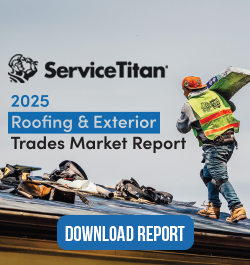
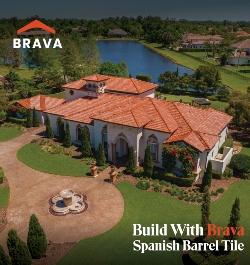




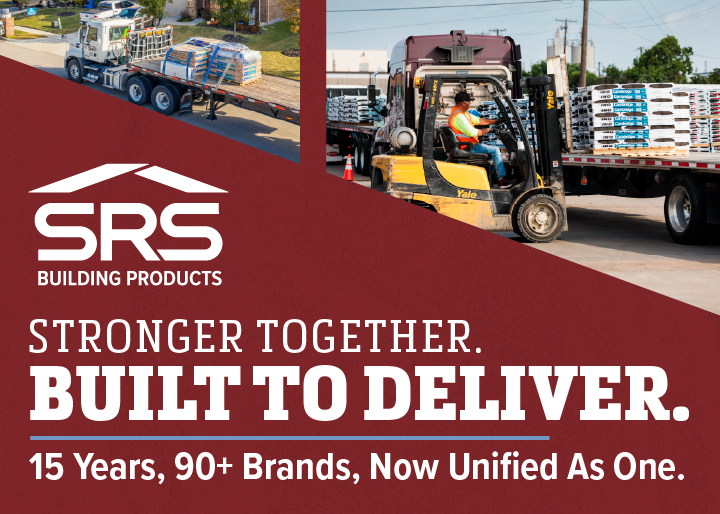
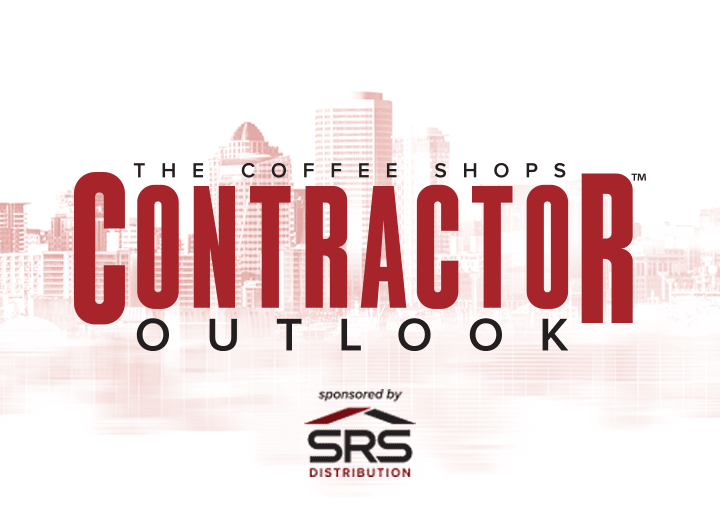


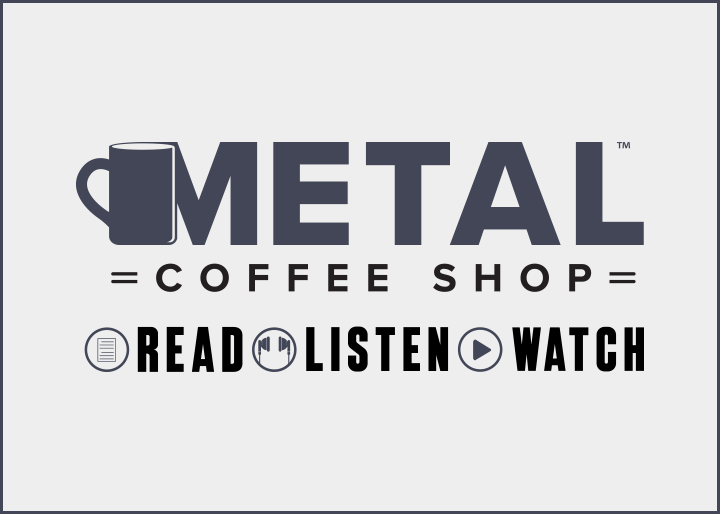

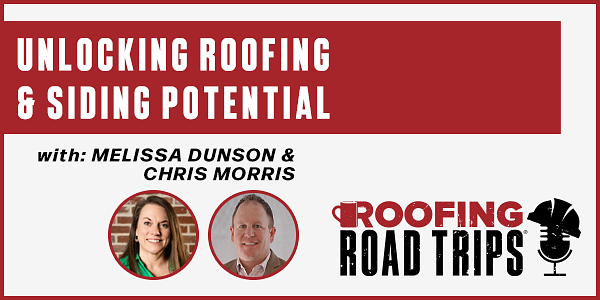
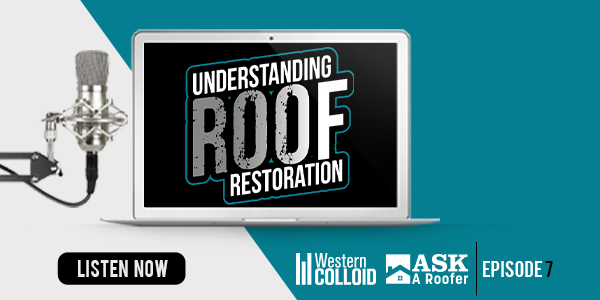

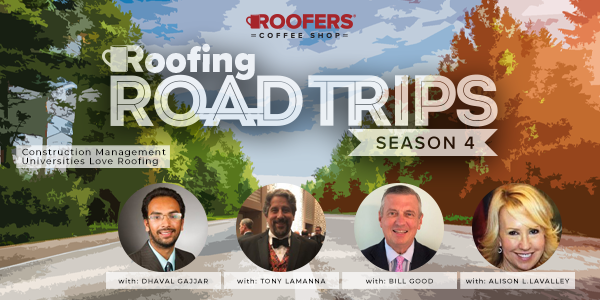

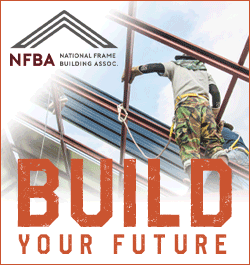
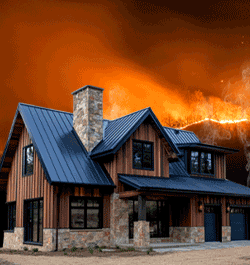
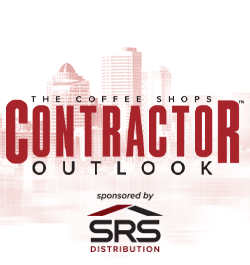

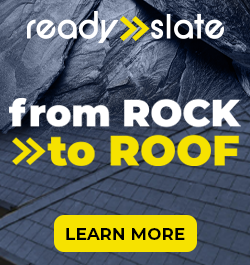
Comments
Leave a Reply
Have an account? Login to leave a comment!
Sign In